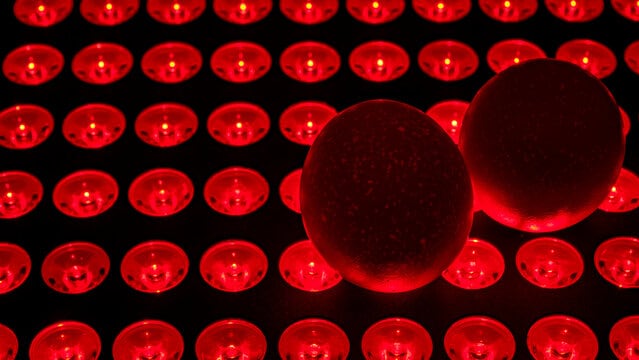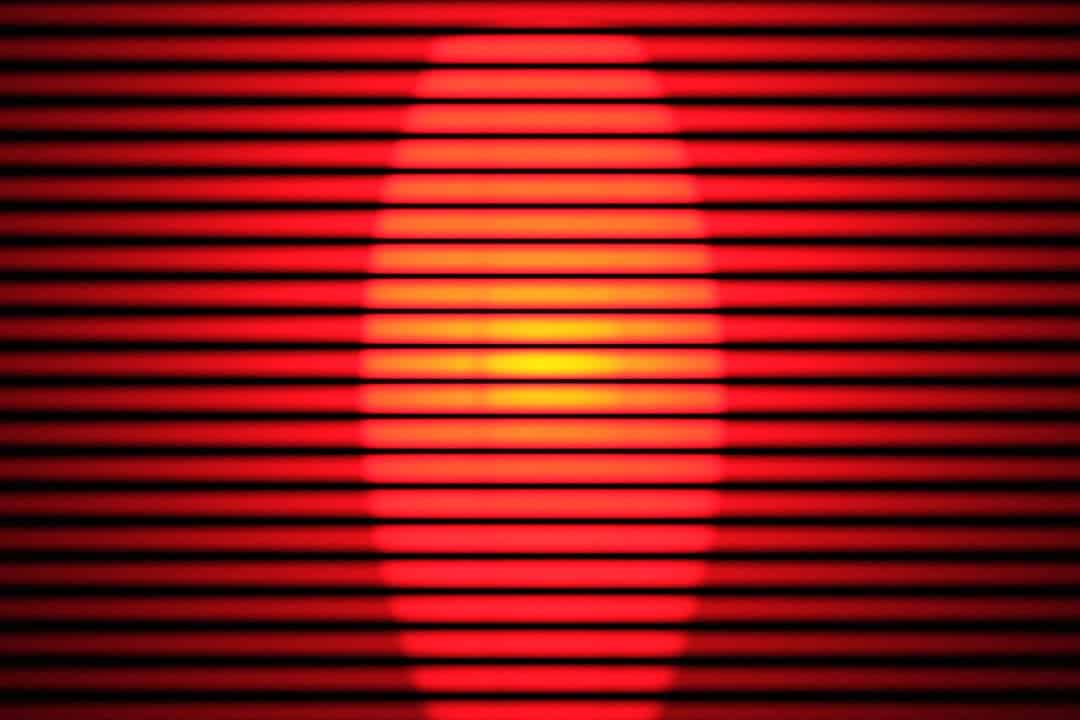Can Any Red Light Be Used for Red Light Therapy?
Red light therapy has become increasingly popular as a natural, holistic approach to improving health and wellness. But can any red light be used for red light therapy? The answer is both yes and no.
While it’s true that certain types of red lights have been found to offer therapeutic benefits, not all sources of red light are suitable or safe for use in the home setting. In this article, we’ll discuss the type of light suitable, and how to choose the right device so you can make an informed decision about whether or not “can any red light be used for Red Light Therapy” is something worth considering when looking into alternative treatment options available today.
Table of Contents
Understanding Red Light Therapy
Red light therapy (RLT) is a non-invasive treatment that uses low-wavelength red light to treat various skin conditions. RLT has long been employed in the medical realm and is gaining recognition as a viable substitute for traditional healthcare. RLT works by stimulating collagen production, increasing fibroblast production, improving blood circulation to the tissue, and reducing inflammation in cells making it an ideal choice for treating wrinkles, scars, redness, and acne.
The science behind red light therapy is still somewhat mysterious, but researchers believe it may reduce inflammation, improve circulation, and boost energy. Red light therapy for skin has been proven effective in treating a variety of skin conditions, including acne, rosacea, and eczema.
Grasping the potency of Red Light Therapy as a means to advance general health and well-being is essential. By learning the potential of this treatment, we can decide if it is suitable for us or our loved ones. To ensure the safety of RLT, consider whether can any red light be used for red light therapy.
Can any red light be used for Red Light Therapy
Incandescent and Halogen
Regular incandescent and halogen lights aren’t ideal for red light treatment, since they emit a broad spectrum of light and can’t be fine-tuned to specific therapeutic ranges. These lamps still allow other colors to pass through, so their output is diffuse and relatively weak.
Incandescent and Halogen lightbulbs, when exposed to high heat, can pose a risk of catching fire. This makes them unsuitable for use near flammable materials, such as fabrics or paper. Additionally, they release UV radiation which can be harmful if directly exposed to the eyes and skin.
Both incandescent and halogen technologies have low-efficiency ratings compared with other lighting options available today; they require more electricity per lumen produced than LED technology does – meaning higher energy bills over time. Additionally, due to their inability to generate specific wavelength outputs required by certain treatments (like RLT) these types of lamps will not provide the desired outcome even if the correct color temperature is achieved.
Fluorescent
Fluorescent lights are a great choice for people looking to save money. They’re much cheaper than other lighting options like incandescent or halogen bulbs and don’t generate the same amount of heat or UV radiation.
This makes them ideal for areas where you want to reduce energy costs without sacrificing quality light output. Additionally, fluorescent bulbs can last up to 10 times longer than their incandescent counterparts.

(Source)
Unfortunately, fluorescent lights aren’t all sunshine and roses when it comes to red light therapy applications. The low-quality light output means that they don’t produce enough therapeutic benefits compared to higher-end LED or near-infrared devices.
Plus, since they use mercury gas in their operation process, they can be hazardous if broken and should always be disposed of properly. Furthermore, the flickering effect caused by some types of fluorescent bulbs may cause headaches in some people who are sensitive to it.
An Overview of Led Bulbs
LED bulbs offer a number of advantages over other light sources. They are energy-efficient, with up to 90% less energy consumption than traditional incandescent bulbs. LEDs also last longer, with an average lifespan of 25,000 hours compared to 1,200 for incandescent bulbs.
Additionally, they generate very little heat and can be used in confined spaces without risk of fire or burns. Finally, LED lights come in a variety of colors and brightness levels that allow you to customize your lighting experience for any room or situation.
When it comes to the question “can any red light be used for red light therapy?”, LEDs are the unequivocal choice for red light therapy given their capacity to generate precise wavelengths with accuracy and cost-efficiency in the long run. Additionally, they provide a safer alternative to traditional lighting sources such as fluorescent or halogen bulbs that involve potential risks of exposure to heat near children or pets.
Use of LED for Red Light Therapy
LEDs are the best choice when it comes to red light therapy. They produce a specific wavelength that is scientifically proven to be beneficial for skin health, muscle recovery, and even depression. Plus, they can be adjusted at the source with precision so you get exactly what you need.
LEDs may cost more upfront than fluorescent or halogen bulbs but they save money in the long run because they last longer and don’t require any additional equipment like colored films or paints. That means fewer trips to the store and less time spent replacing bulbs—which adds up over time.

(Source)
When it comes to light therapy, precision control is key. With LED lights you can adjust each bulb individually so that it produces just the right wavelength of light needed for optimal results. LEDs also have an advantage when it comes to safety as well since there’s no risk of overheating like there is with traditional bulbs which could potentially start a fire if not monitored closely enough.
In conclusion, LEDs are clearly superior when it comes to red light therapy due to their ability to produce precise wavelengths, their cost-effectiveness over time, and most importantly—their safety features which make them perfect for use around children or pets without worry about potential accidents resulting from heat exposure near traditional lighting sources such as fluorescent or halogen bulbs
Safety Concerns Related To Red Light Therapy
RLT, a recent development in the sphere of health and self-care, has been receiving more attention lately. While it has many potential benefits, safety concerns related to RLT should not be overlooked. It is important for those considering using RLT devices to understand the risks involved before making a decision about whether or not to use them.
The most common concern with RLT is that long-term effects are still unknown due to a lack of standardized studies and research into this form of treatment. In addition, there have been reports of adverse reactions from people who have used certain types of red light therapy devices such as skin burns, eye damage, and increased risk of cancer when used incorrectly or excessively. As such, it’s important to ensure that you are following all safety guidelines when using any type of device for red light therapy treatments.
Given the fact that many consumers report having a positive experience after using a red light treatment, it is advised to exercise precaution when trying out any new type of medical approach. It is important to note that every individual is different and will respond in a different way, so there is no guarantee that you will experience the same results.
At the end of the day, it’s recommended that you consult with your doctor before undergoing any red light therapy treatments. While there aren’t any known side effects, it’s always best to err on the side of caution.
Safety must be considered when utilizing red light therapy, like averting direct exposure to the eyes and skin. When deciding on a red light therapy device, one should bear in mind the safety precautions necessary.
How To Choose The Right Device For You?
When considering at-home red light therapy devices for your skin, you need to consider the power output (in Watts) and frequency (in Nanometers). You also need to consider the type of light bulb (LED or Incandescent). The form and shape of your device are also important.
Online product reviews from actual customers can be a valuable resource when deciding which device to purchase. User feedback can shed light on important features, such as ease of use, set-up times, and safety features. Look out for reviews that contain specific product claims, such as “Clinically Proven Results” or “Backed By Science”, as these may indicate that the product has been rigorously tested and verified.
While it may be tempting to purchase a cheaper unit, consider the benefits of paying more upfront for a high-quality, durable product. In the long run, you’ll be saving money on replacement parts and repairs, as well as avoiding the inconvenience of having to frequently replace units.
FAQs in Relation to Can Any Red Light Be Used for Red Light Therapy
Does red light therapy work with any red light?
No, not all red light therapy works the same. Red light therapy requires specific wavelengths and intensities of red or near-infrared light to be effective. It is essential to utilize a device that has been tailored for therapeutic purposes in order to attain the preferred outcomes since distinct kinds of lights can create dissimilar effects.
Are all red lights infrared?
No, not all red lights are infrared. Visible red illumination is detectable by the human eye, from a range of wavelengths between 620-750 nanometers.
Infrared light has longer wavelengths than what we can see with our eyes, ranging from 780 nm to 1 mm. Hence, not all red lights are emitting infrared radiation.
Conclusion
In conclusion, when it comes to the question “can any red light be used for red light therapy” only one answer is accepted: LEDs. LEDs provide the proper characteristics that RLT requires in order to provide effectiveness and safe use. Red Light Therapy can bring numerous benefits as well as risks therefore proper research and consultation from a health professional are extremely encouraged.
Take charge of your health and well-being with Smart Living Now’s comprehensive resources for red light therapy. Discover the science behind this natural healing modality, access step-by-step guides to help you get started, and find out which types of lights are best suited for optimal results.







